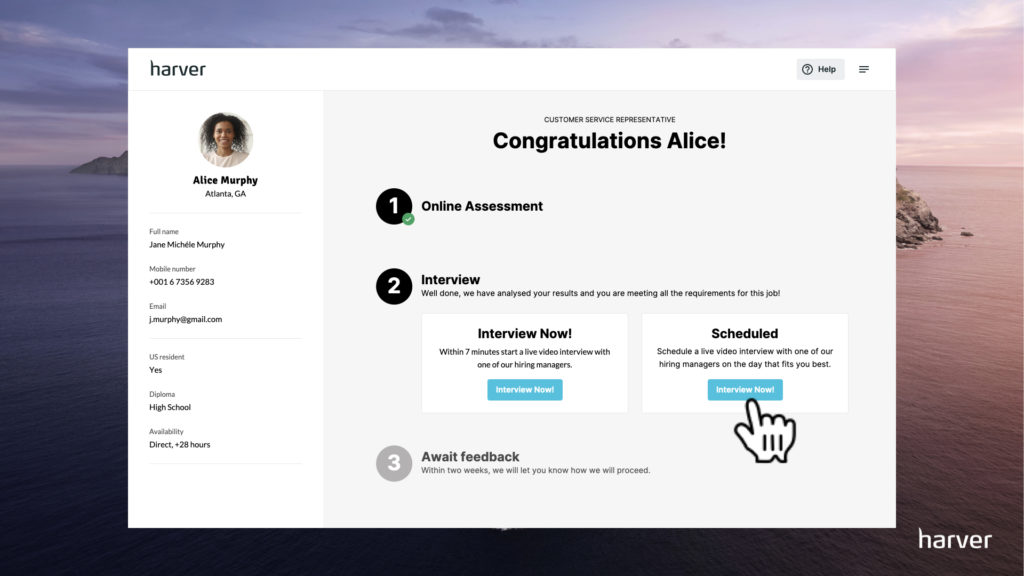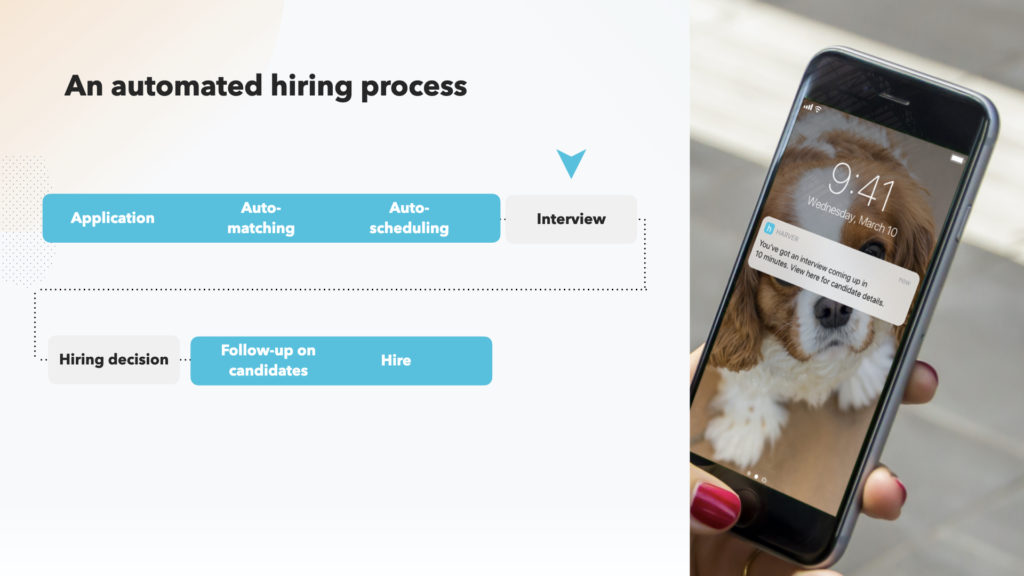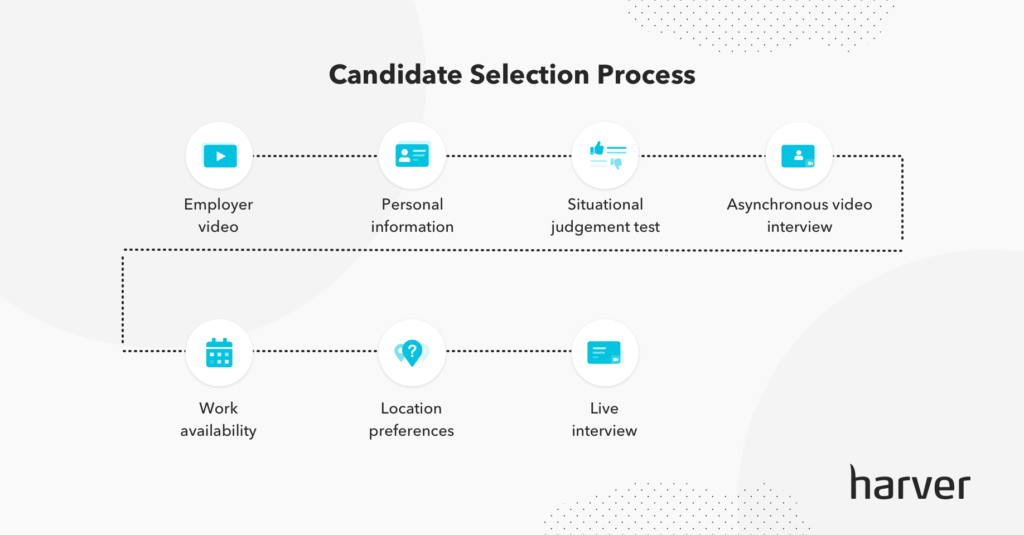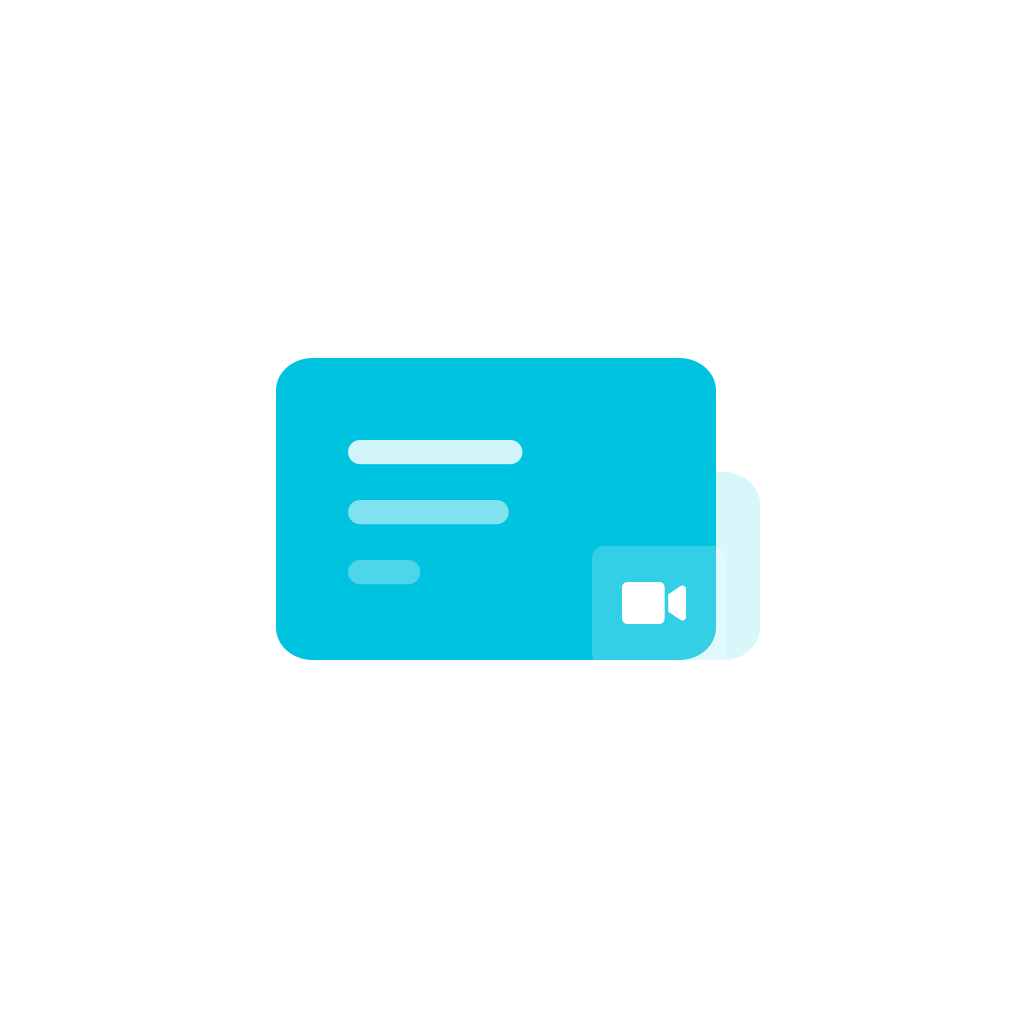Recruiters in volume hiring are often reluctant to implement video interviewing into their hiring process. They think they’ll lose the human factor from the application if they automate everything, including job interviews. But this isn’t true.
It’s not the video interview itself that will depersonalize the meeting. It’s the way you implement video interviewing and the recruiting software tool you choose that will, in the end, dictate the result, making the application feel less or more personal.
So to ensure that your recruitment process flows fast and efficiently, here’s how to implement video interviewing in volume hiring.
What’s in?
Like what you see?
Don’t miss out. Subscribe to our quarterly digest to get the latest TA and TM resources delivered right to your inbox.
Why use video interviewing in volume hiring
When recruiting at scale, you need to screen a high number of applicants, shortlist them and make fast hiring decisions. You don’t want to leave the best candidates hanging around for your competitors to snap up. But the interview stage is notoriously a bottleneck in the selection process.
Especially now when the supply of talent is much lower than the demand, candidates don’t want to wait several days to hear from a recruiter. Going back and forth with emails and phone calls just to try and schedule an interview is a sure way to lose a candidate’s interest. Video interviewing allows you to streamline and speed up the process.
You can screen applicants quicker by implementing asynchronous video interviewing early on, to enhance your pre-assessment stage. Then, you can meet candidates virtually in a two-way live interview towards the end of the application, before making a hiring decision.
Video interviewing saves you money, time, and effort. It removes the need for in-person interviews or laborious phone screening. It enhances both recruiter experience and candidate experience, but we’ll go into this in more detail below.
Benefits of video interviewing when recruiting at scale
Before discussing the why, let’s quickly clarify the two types of video interviews used most commonly.
- One way (asynchronous) video interviews – where the candidate records their answers to your interview questions on a video and your hiring teams watch it later. This is more time-efficient, but used too early in the selection process, might scare off candidates. In a loose labor market, that’s not a problem, as you want to filter out as many applicants as possible and interview only the best applicants. But in a tight labor market, you might want to decrease your drop-off rates, so it’s better to leave the video interview for the last stages of the selection process.
- Two way (live video) interviews – where candidates and interviewers have a live conversation. These are best done at the end of the process, when you’ve already assessed the skills and characteristics of your applicants.
Now let’s look at the main reasons for implementing video interviews into your volume recruitment process.

Enables volume hiring
By using video interviewing, companies can vet much larger volumes of candidates in less time, than by using in-person interviews. In addition to saving time during the recruitment process itself and reducing time to hire, it allows companies to carry on hiring, even when it’s hard to meet in person, such as during a pandemic.
With one-way video interviews, you can quickly and efficiently screen candidates by presenting all applicants with the same series of questions, either as text or pre-recorded. Candidates then record their answers at a time that suits them. All applicants get the same amount of thinking time, the same amount of information, and the same amount of time to answer the question, ensuring a fair process.
Harver’s video interviewing module is purposely built for volume hiring. You can learn more about it below.
Offers a complete picture of the candidate
There’s only so much you can tell about a person without seeing them in the flesh. 93% of human communication is non-verbal, and when you’re hiring for customer service roles, you need employees who don’t just talk a good talk, but who are just as friendly in their body language and their mannerisms, both of which are super important when working in customer support roles.
In BPOs and contact centers it’s essential to hear a candidate’s spoken language skills. It’s just as important in retail roles too. In the US, consumers are willing to spend more just to do business with companies that deliver a great customer experience, and that means having the best customer-facing employees who possess excellent communication skills.
Video interviews give you a sense of how candidates present themselves, firsthand. You can quickly gauge someone’s attitude, personality, their energy levels, none of which you can do via phone interviews or from a resume.
Asynchronous interviews are best placed at the very start of the hiring process if being used. They’re a great way to help talent acquisition teams get a more accurate picture of each candidate, before deciding whether to move them along the application path or not.

Enhances the candidate experience
Candidates get the opportunity to present themselves at a time and place to suit them. When they’re most refreshed and comfortable. It reduces their stress levels. They can showcase their personality and their skillset, and they can demonstrate why they fit your company culture.
They can even re-record their answers during one-way interviews if they need to. By putting the power in the candidate’s hands, you enhance the overall candidate experience.
Streamlines the hiring process
Video interviewing software streamlines the hiring process by directly integrating with most ATSs. Candidates don’t need to have certain types of software installed, or have an account with a communication platform. Nor do they have to click on a link that takes them away from the application process.
Also, video interviewing adds a qualitative element to your pre-selection process, enhancing the assessment data you collect from candidates. Incorporating one-way video interviewing allows you to get a much more rounded picture of a candidate from the outset, helping speed up your selection efforts.

Ensures human connection while keeping social distance
Implementing video interviewing guarantees you don’t lose the vital human connection/element. Candidates still ‘meet’ recruiters. Recruiters still get to engage with potential employees.
Video interviewing eliminates the time and place limitations. I.e applicants don’t have to find time in their schedule to physically come into your interview center. They can have their interview right away if it suits, from the comfort of their home. They can also do it in their own time, allowing for greater flexibility of time and place, including different time zones.
Also, this solution guarantees the safety of both the interviewer and the applicant. No having to come to meet you face to face. The interview is conducted remotely.
Reduces reliance on recruiters
When you use asynchronous video interviews, you don’t need an interviewer to host the interview. A hiring manager simply pre-records a set of questions and all candidates record their responses to these questions. This eliminates the need for interview scheduling and allows recruiters to review video interviews at a time that suits them.
For example, you might need to confirm successful applicants, someone else maybe needs to watch it, or for audits. You can use old interviews to refine your interview process by watching them back, and they can help you develop a standardized interview process, reducing the risk of unconscious hiring bias.
Considerations when choosing a video interviewing tool
When using video interviewing in volume hiring, you can’t simply use Skype or Zoom or even FaceTime as these require users to have an account with that particular service. And if candidates don’t, you risk them dropping out of your hiring pool. Plus, none of these platforms were built for interviewing at scale.
We’ve covered the requirements that a volume hiring video interviewing tool should meet in the article below. But just to give you a quick summary – in big lines, these requirements are:
- Supports one-way and two-way virtual interviews. Because of the two different types of video interviewing – one way (asynchronous) and two-way (live interview), you’ll want a video interviewing tool that supports both options. If you opt for just regular interviewing tools, you might end up with integrations that aren’t as smooth as you them to be, and this will create frustration on both ends.
- Ensures synchronicity. Your video interviewing platform needs to be able to synchronize calendars so that if applicants want to interview live, they’ll see the real-time availability of recruiters.
- Customization. The look and feel of the interview software should be the same as the rest of your recruitment process. You don’t want to confuse applicants. For example, the branding should be the same, and the applicant shouldn’t be sent to a different platform or need to click a different link just to record the interview. All of this should happen seamlessly, in one place.
- Tech stack integration. Your chosen video interview software should be compatible with your current applicant tracking system (ATS). There’s no point implementing new tech that adds to recruiters already overflowing workloads, rather than reducing it.
- Facial recognition technology. Be wary of using software that uses AI to analyze your interviews. Some interview tools are designed to read faces and learn to make decisions based on micro-expression analysis – and they can learn to be biased. If you use such software, be aware that its use can have legal implications in some US states. At Harver, we don’t use facial or micro expression analysis technology.
When to implement the video interview in the hiring process
We suggest implementing asynchronous video interviews at the beginning of your workflow alongside the pre-employment assessments. And the live video interview at the very end of your workflow, and here’s why.
Typically in volume hiring, you want to filter out candidates who don’t fit the role first, based on their skills. We’ve found that the best way to do this is to create an application flow where you screen applicants through pre-employment assessments, assessing them for the requisite skills your role requires.

Once screened, you then check their availability for the role. You don’t want to get too far down the road only to discover that the applicant’s availability doesn’t match your role’s hours.
When you’ve done that, you then need to ensure the candidate fits with your culture through further pre-employment tests. You might also want to test their job knowledge if hiring for roles that require some specialized knowledge – for example, tech support, sales positions, or healthcare roles.
It’s only once you’ve screened and assessed candidates should you interview them, live. This is why we recommend to our clients that they implement our video interview module at the end of the recruitment process.
When you use asynchronous interviews at the beginning of the application process, it tends to lead to higher drop-off rates, because candidates aren’t usually invested in your opportunity and your company.
They don’t want to put in much effort yet. They want to see what the role is about, if they pass the assessments and if the role suits them before they meet someone for an interview. By the time candidates have passed through your recruitment funnel and they’re in the final stages of your hiring process, they are more committed to your organization.
Next steps
Video interviewing software enables you to interview people at scale and ensures a fast and efficient process for both candidates and recruiters regardless of labor market fluctuations. It adds a human touch to an automated process and enables your talent team to assess candidates’ verbal communication skills and body language along with their fit for the job.
Harver is built for volume hiring, which means that our video interviewing module is designed and engineered with the challenges of high-volume recruitment in mind. If you’d like to see our video solution in action, you can book a demo below.
Ready to transform your hiring process?


